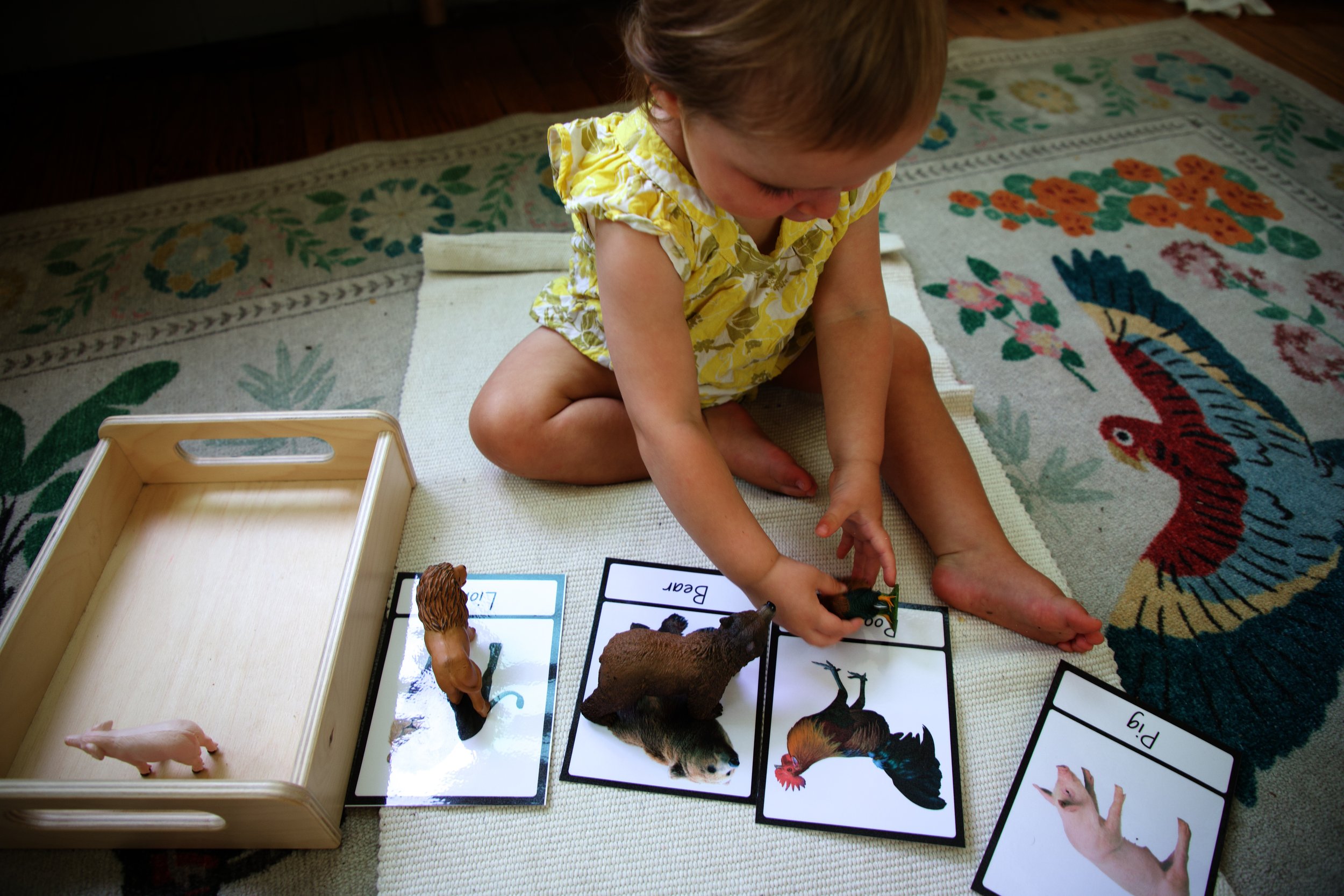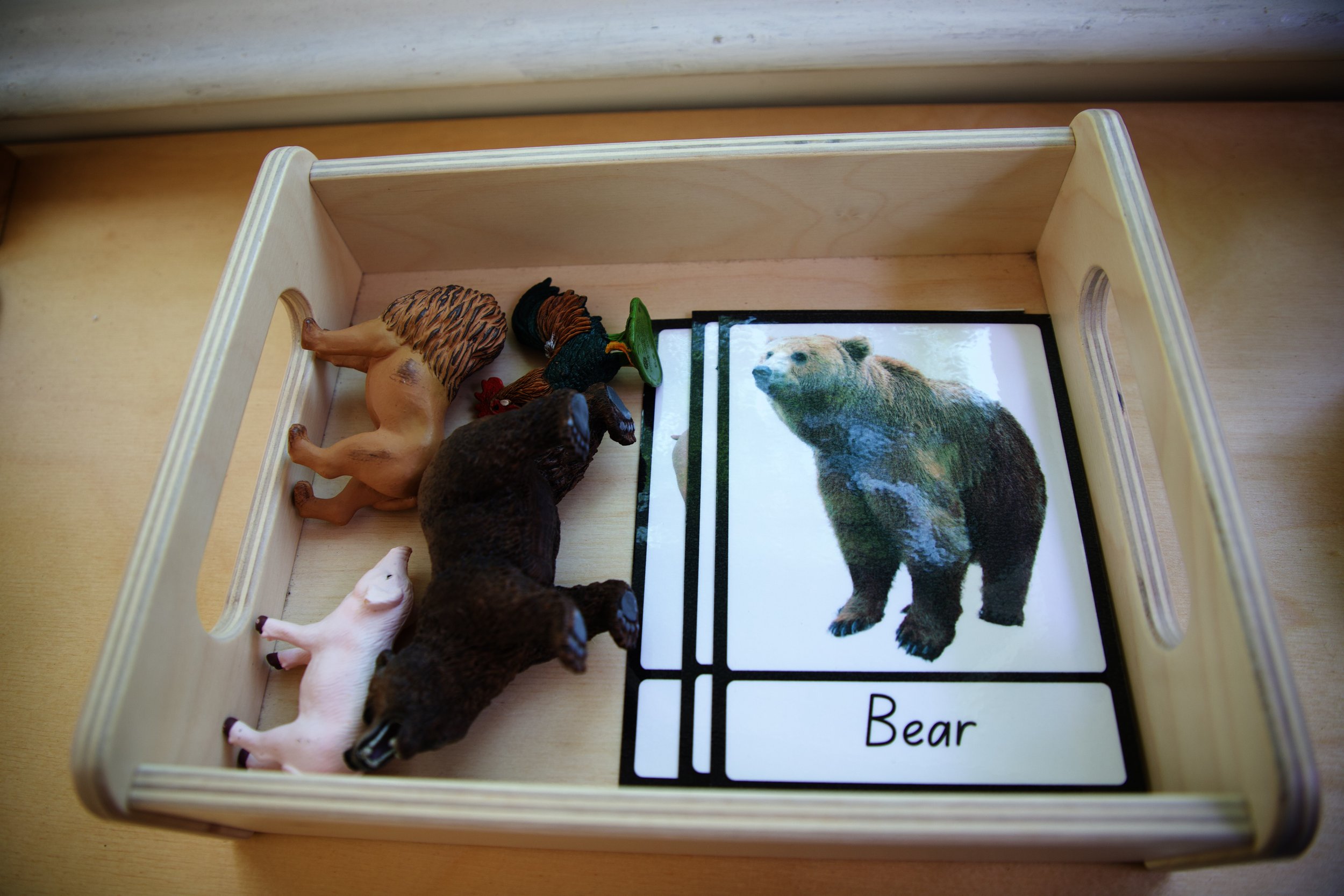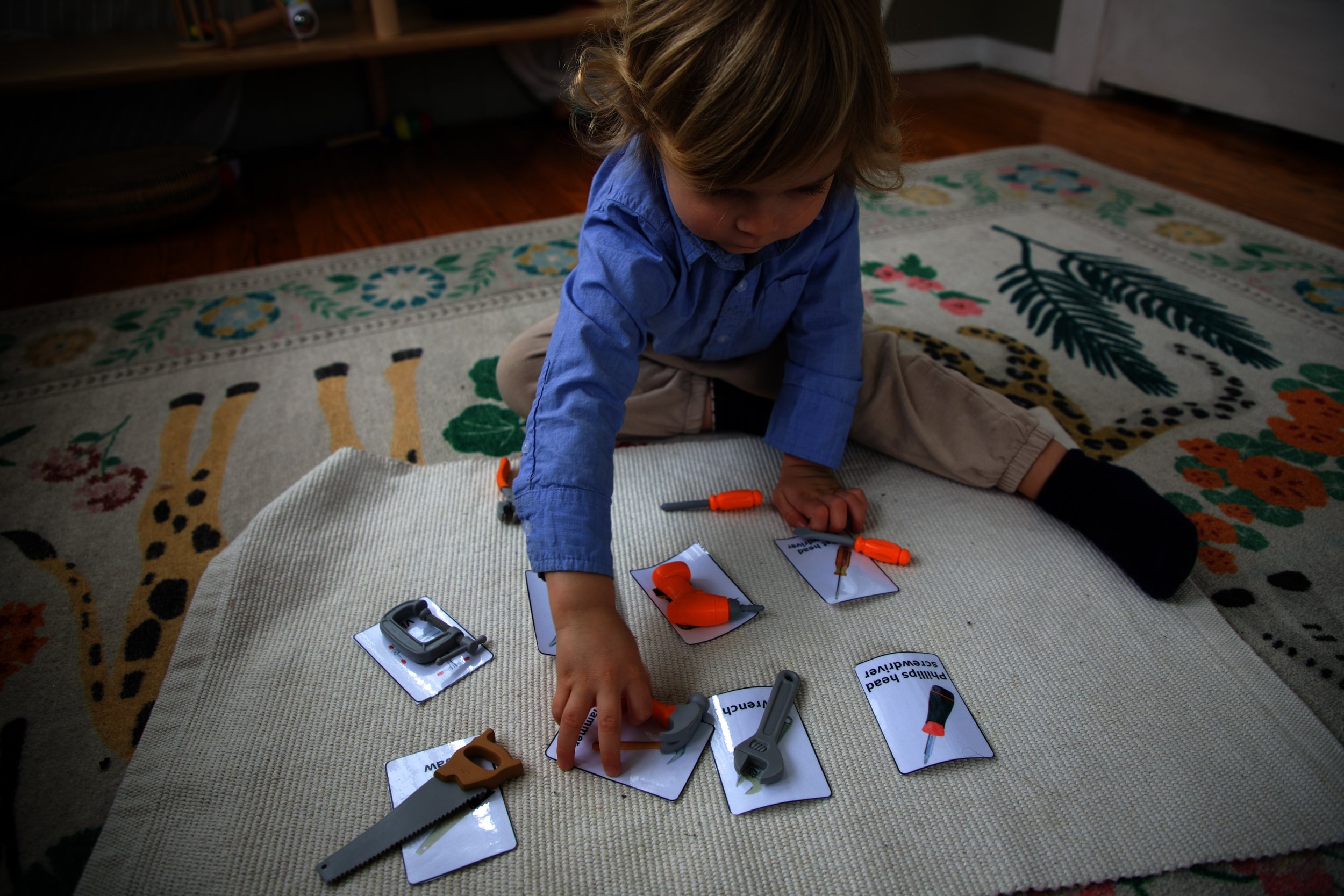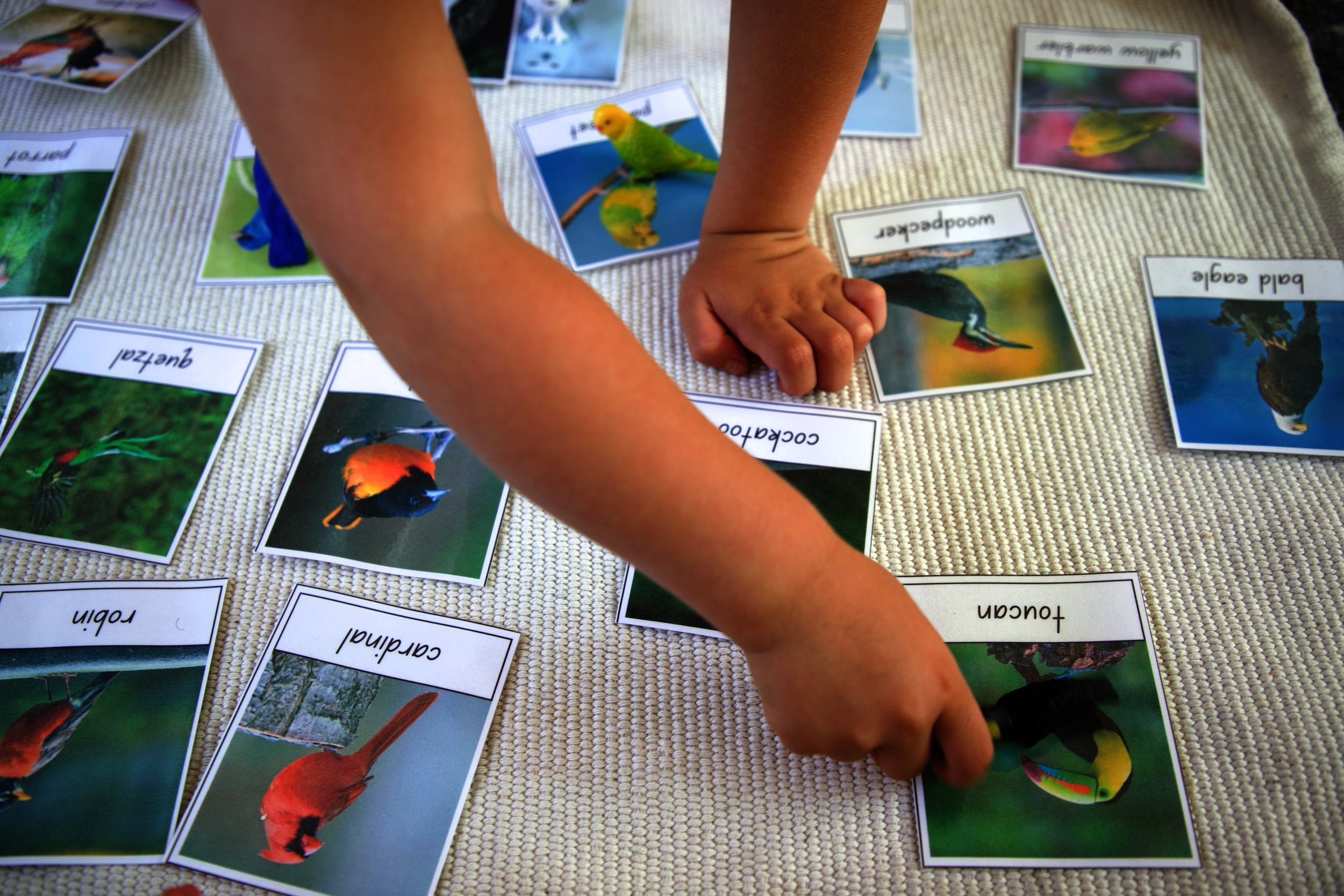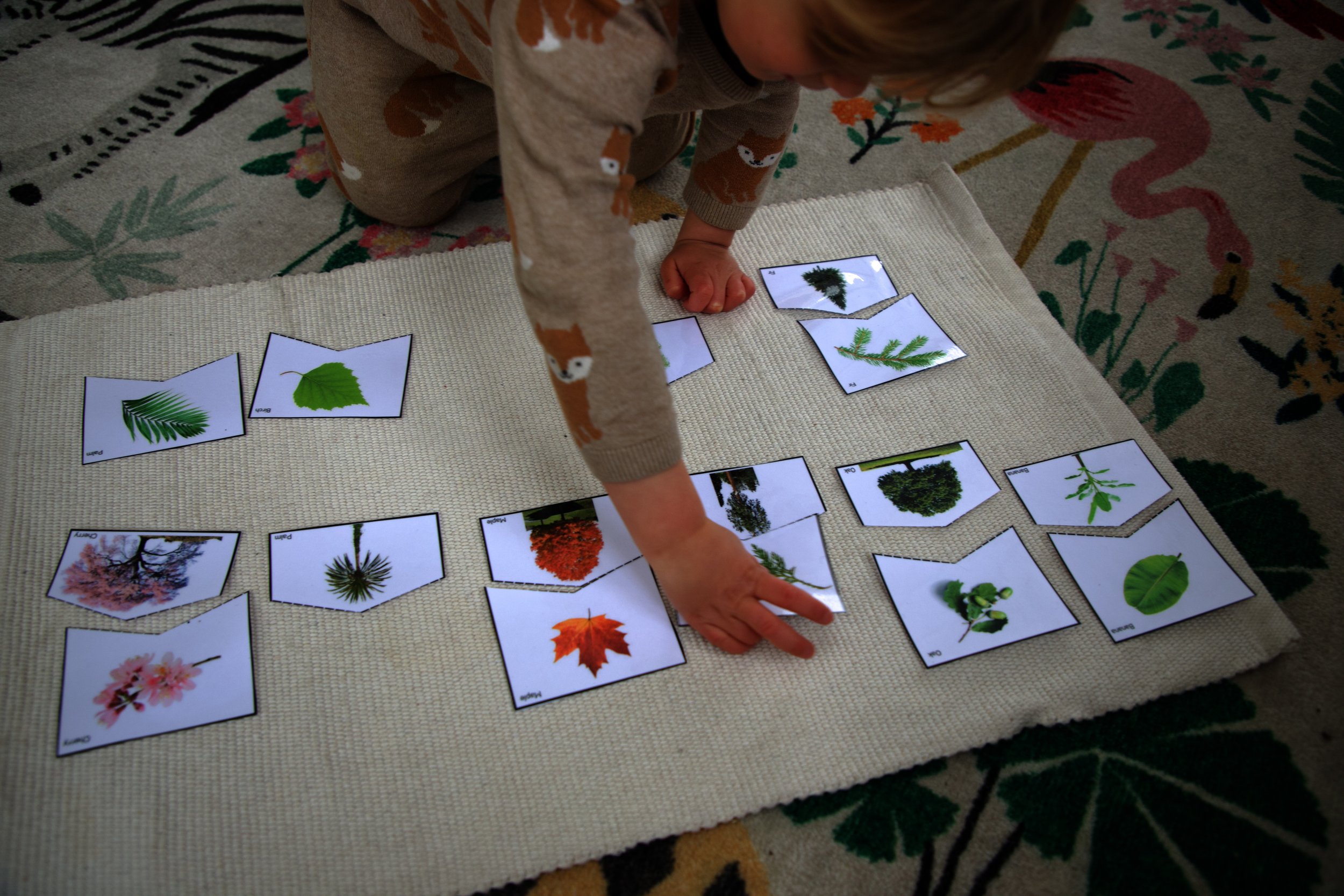Montessori Language Work: Matching Activities
This post may contain affiliate links, which means I may earn a small commission if you buy through my link but does not change your price.
My daughter just turned 18 months and has entered into the stage of one of my absolute favorite Montessori activities: matching. I give her small animals for her to match with a photo of the animal. My son loved object to picture matching like this from about 18 months to 2.5.
What are matching activities?
Matching activities are exactly that- an opportunity for a child to match two things. The first matching skill you may see come up is object-to-object matching. This looks like matching two identical objects. Objects are more concrete than pictures, so this skill can develop first. This is not a skill I particularly saw with either of my children. I never really set up activities for this and instead started with more activities once they moved to the next stage: object-to-picture matching. I will discuss the stages of matching below and some activities you can offer for different stages.
Matching activities are a great way to work on visual discrimination but my favorite thing about matching activities is the language learning potential. As my son got more adept at object-to-picture matching we introduced a wide variety of language this way. For example, at around 23 months my son learned the names of major world landmarks from object to picture matching with world landmark figurines. We combined these with every “unit” we did as a way to expand vocabulary.
Introducing names of tools using object to picture matching
All you need for matching activities is small figurines. These can be any theme but I prefer something simple and realistic to start out. My favorites for little ones first starting with object-to-picture matching are Schleich animals. We started with simple animals whose names are easy to say and we may see around us: cow, pig, horse, etc. For older toddlers doing more advanced matching, I like the Safari Ltd. toobs. We have done world landmarks (my son’s favorite), tools, flowers, sea creatures, insects, birds, and more! These are more affordable but the pieces are smaller so you want to make sure you are supervising your child closely. To go with the small figurines I print out cards I make online. These can easily be made using a site like Canva, though I offer a few available on my site if you’re not interested in making your own, including our favorite world landmarks cards. You can also find many on sites like Etsy and Teachers Pay Teachers. The ones my daughter is matching here are available for free on my site. Personally, though, I do recommend making them yourself. Once you have a template that works for you (search flashcard on Canva to get started!) they are easy to make and you can make them for any sort of matching you want.
A matching activity for my 18-month-old
Progression of matching
As I mentioned above, the first skill you may see develop is object-to-object matching. This looks like matching two identical objects. This is not something I have really provided activities for for my children. However, around 18 months both of my children started to become interested in object-to-picture matching. As with everything, ages of course vary!
With object-to-picture matching, we started with very simple realistic pictures and realistic figurines. The figurines looked as much like the picture as possible. I removed the background on photos in these early stages of matching so that my child could focus just on the animal they were matching, not the background of the photo. I also started with simple, everyday animals and objects, presenting only a few at a time.
After a while that became easy for my son and we switched to more complex object-to-picture matching. There we would have photos with a background still attached, figurines that don’t exactly match the photo, and more complex figurines. This is where I saw an explosion of language through our object-to-picture matching.
My son was very interested in this until around 2.5. Now at 3 I do sometimes still offer these as part of a unit (such as flowers during our flower unit or birds during our bird unit) as a way to learn some new vocabulary. However, my son is much less interested in them now. I also use them with 3D shapes to learn the shapes and other times I am targeting specific vocabulary.
A more complex matching activity for my 3-year-old as part of our bird unit
The next step after object-to-picture matching is picture-to-picture matching. This can look like matching baby and mom animal pictures, two angles of the same thing, or a close-up to a full photo. My son has not been as engaged with this sort of matching. It is great that you can then just print it offline and not need figurines but I find many children do not find this sort of work as engaging without the figurines. Shadow matching is another option that my son did find a bit more engaging around 2.5 years old. There he would match a picture of something with its shadow. Now I will occasionally offer part to whole matching as a springboard for discussing the topic but I do not expect him to return to doing it often again as he used to before he was 2.5. I have done whole-to-part picture matching, leaves to trees, and feathers to birds.
Tree to leaf matching at 2.5
Building off of matching activities eventually is a movement to 3-part cards. 3-part cards allow a child to label a picture with a picture attached to the label as a control. These are a very classic Montessori activity. My son at 3 has not found these particularly engaging. He can do it independently though most children at this age will require the words to be read to them. I will continue to introduce this sort of matching work and see where he takes it. He is very into reading right now so he is slightly more interested in them, but as with other matching he has done since 2.5, he will not return to them again and again like he used to do.
As with everything, you can also add more challenge in other ways. One way I did this is to add tools such as chopsticks or tongs.
A presentation of a matching activity at 2.5: here I added chopsticks to increase the challenge
Matching activities are one of the simplest and most Montessori affordable activities you can introduce to your toddler. They are a wonderful way to work on language skills with words you may not experience in everyday life. You don’t need anything fancy but can even do matching work with items you already have around the house.

